Top 10 Hypothetical Space Objects
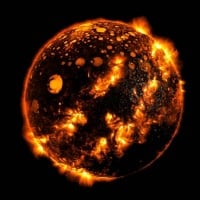
While it currently doesn't exist in the structure of our universe, Iron Stars are made only when protons are unable to deteriorate; speculated these type of stars undergo a process that only works through quantum tunnelling, which then fuses ordinary matter into iron-56 nuclei, then into iron via fission. They potentially will occur in the very far future scaling enormous amounts of time; they start appearing in approximately in around 10^1000 to 10^2000+ years in the universe within these time periods, which is heavily unlikely to but a possibility.
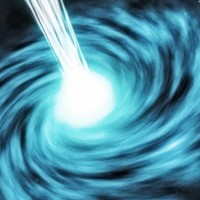
In the basics, a white hole functions almost exactly like the black hole sucking matter and light, but the difference is matter & energy are expelled from the white hole, therefore it is impossible to enter a white hole due to overwhelming amounts of energy being released from white holes. It's speculated that white holes might exist in the universe but currently there's no consistent evidence to back it up; although there is one candidate, which is the GRB 060614 detected back in June 2006, and was thought to be theorized being a real white hole (GRB is an abbreviation standing for "gamma ray burst").
A hypothetical planet that's rich in carbon, in superior quantities than compared to oxygen, and may potentially consist of diamonds in plentiful amounts under enough pressure. Carbon Planets are thought to be lacking in water, with little or no traces of water. Some speculate that carbon planets may have existed in the earlier times of the universe. There are exoplanets that potentially may be classified carbon planets; currently, it's not confirmed yet.
A type of hypothetical planet basically known of not consisting a metal core. In order to form a coreless planet, iron & water accumulation must be both consisted; iron would react to water forming an oxide expelling hydrogen which therefore oxidized iron is unable to make a core since it has been confined.
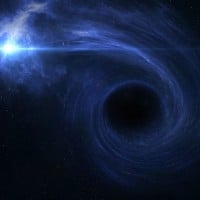
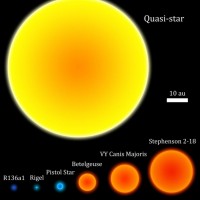
These types of stars are raised into such massive scales larger than the known largest stars of the universe. Speculated they might have formed at some time in the earlier stages of the universe, mostly forming via collapsing of a star on its earlier stages, therefore forming a black hole continuing the production of energy equal to its gravity forces; unlike nuclear fusion, quasi stars contain and are powered by black holes. Its diameter size can reach up to over 7,000+ times larger than that of the sun (from scales about 10+ billion of kms) and consists of thousand(s) of solar masses. Black hole stars is another name for Quasi Stars. In the current age of the universe, they are unable to form due to changes of helium & hydrogen via terms of elements.
A hypothetical space object very unlikely to currently exist at the universe, consisting of low temperatures at 273 K on average (surface temperature terms), dimmer and colder than the faintiest of red dwarfs. Though, they might appear in the far future of the universe with increased metallicity whereas stars are unable to persist on hydrogen fusion therefore leading into a frozen star due to metallicity concentrations being several or more times higher than that currently in the interstellar medium.
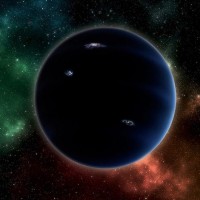
A famous hypothetical planet approximately the size of Neptune and with orbits far exceeding Pluto taking over 10+ millenniums in order to do a full orbit in earth year terms. Currently, astronomers are still searching for the planet. Yet, even with powerful telescopes, surveys & other equipment, there is still no observation that suggests the planet exists; still remaining a theory. Planet Nine is suggested to be 10 times more massive than earth and may be twice or more large as earth in radius terms. It is also suggested that this hypothetical planet might be the cause of unusual orbits of various objects residing in the outer regions of the solar system.
A hypothetical type of star made up of free quarks or strange quarks raised at such enormous temperatures. Quark stars might be in scale terms, smaller in comparison to neutron stars but thought to be much more denser. Said to be created under intense pressure to the point neutrons are converted into quarks; quark stars generally have enormous densities, and frequently mistaken to be neutron stars. There are several candidates of potential quark stars including supernovas; though, the actual existence of quark stars is not confirmed yet.
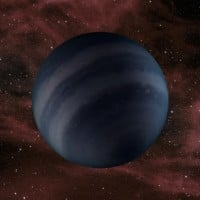
Black Dwarfs are formed when white dwarfs are completely died down and crystallized via gradual cooling of thermal radiation, therefore forming a black dwarf; black dwarfs currently do not exist anywhere in the universe since in order for a white dwarf to be in the dying stage, cooling off would take extreme amounts of time exceeding the current age of the universe; it is currently not known of the accurate length of time in order for white dwarfs to entirely cool off.
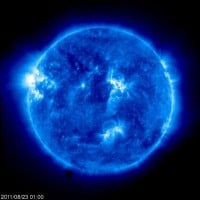
Since the universe is young in age, blue dwarfs can't be formed yet. Blue dwarfs are thought to be a part of the stage of red dwarves. Since stars are known for emitting more light and energy faster as they age, therefore evolving to giants due to increase in scale. Instead, a red dwarf with at least one fourth or lesser of solar mass is said to increase surface temperatures hotter to the point that the color of the star appears blue. No red dwarf has their entire hydrogen stores depleted since red dwarfs consume hydrogen at a slow rate; therefore mentioned above, the universe is too young enough for blue dwarfs to exist.
If a space elevator was real, I would see the moon in person WITHOUT even using a telescope! I'm waiting!
A space elevator is a hypothetical elevator/tower that leads you up to space.
There are believed to be planets similar to ours, but the closest we've found only have hints of similarities to Earth, such as mass, diameter, and composition, though while we do know some about their atmospheric compositions, we don't know what thrives there or what they look like up close.
Yet not all of them orbit stars similar to our Sun, but many also orbit red dwarfs, which are small, dim, cooler, and usually notorious for emitting powerful flares much more violent than those from our Sun, and sterilizing the planets' atmospheres and surfaces.
We also don't know what they look like up close or whether or not they support life.
But we've tried our hardest and they're like finding a needle in the haystack.